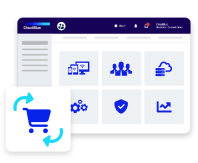Revenue backlog refers to the amount of unrecognized revenue a business expects to receive from current customer contracts.
In SaaS companies, where subscription-based models dominate, this metric highlights future income that hasn’t yet been recorded in financial statements because the services haven’t been delivered.
For example, if a SaaS business signs a one-year subscription contract for $12,000 billed monthly, the initial balance of the revenue backlog would be $12,000. Each month, as the service is provided, $1,000 is recognized as revenue, reducing the backlog accordingly.
Revenue Backlog vs Deferred Revenue
While revenue backlog and deferred revenue might seem similar, they serve different purposes in financial management. Deferred revenue represents money a business has already received but hasn’t yet earned, making it a liability on the balance sheet. Revenue backlog, on the other hand, tracks revenue that hasn’t been invoiced or received but is guaranteed under signed contracts.
Think of deferred revenue as prepaid service income and revenue backlog as income that’s secured but not yet billed. Both metrics are crucial for understanding a company’s financial health and future income streams.
Why Revenue Backlog Matters
Monitoring revenue backlog is essential for SaaS businesses because it provides visibility into future cash flow and recurring revenue potential. It helps investors and stakeholders assess long-term financial stability by showing the revenue pipeline. A healthy revenue backlog indicates strong sales performance and stable customer relationships.
Businesses can use the revenue backlog ratio, comparing backlog amounts to recognized revenue, to gauge future growth potential. A high ratio suggests robust contract commitments, while a declining ratio might signal slowing sales or shorter contract durations.
Staying on top of revenue backlog ensures better financial planning, supports investment decisions, and strengthens overall business management in the competitive SaaS environment.













